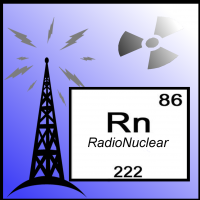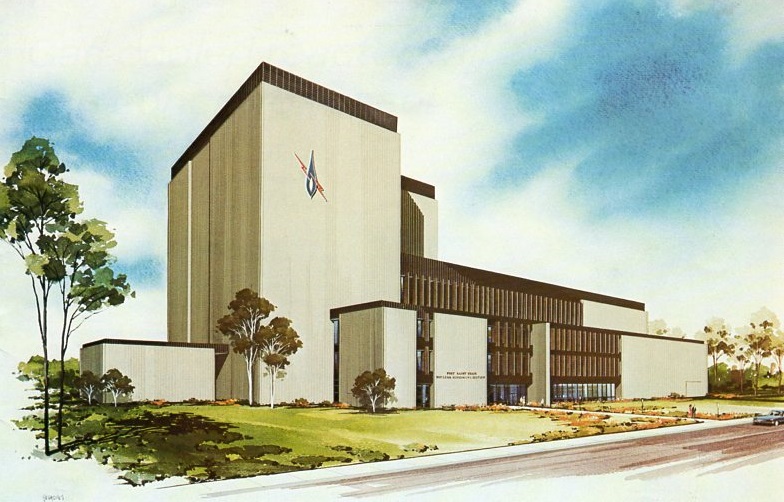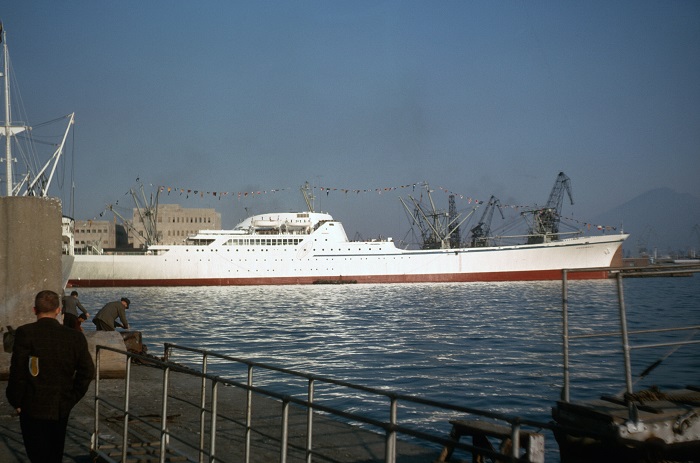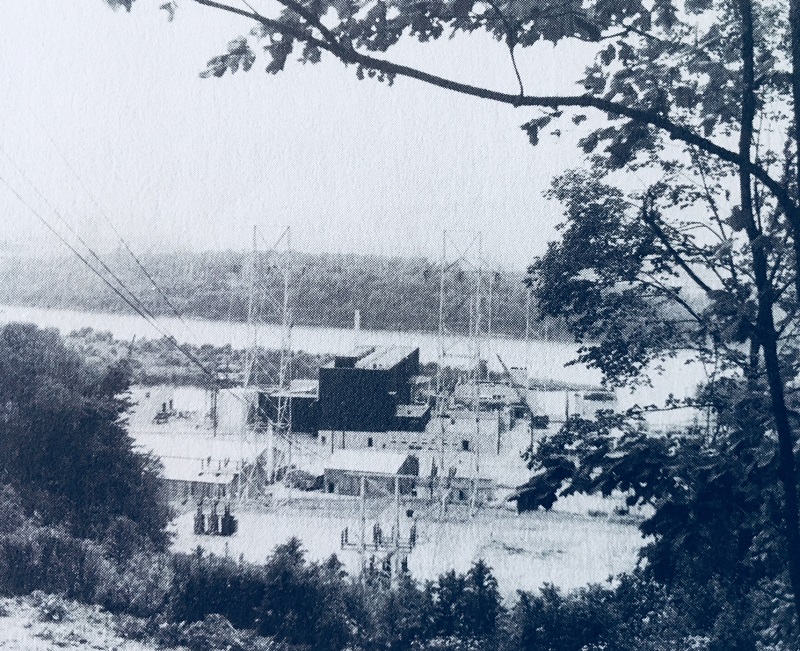Women’s History Month & Nuclear Physicist Katharine Way
 Happy Women's History Month! Each week during the month of March, one woman from the history of nuclear science and technology will be featured on the ANS Nuclear Cafe.
Happy Women's History Month! Each week during the month of March, one woman from the history of nuclear science and technology will be featured on the ANS Nuclear Cafe.
The ANS Nuclear Cafe is a blog owned and edited by the American Nuclear Society. Information contained on the ANS Nuclear Cafe has been provided by numerous sources. Therefore, the American Nuclear Society assumes no responsibility or liability for the accuracy of information contained herein. DISCLAIMER: The views expressed in posted articles do not necessarily reflect the views of the American Nuclear Society. The views expressed here are those of the individual authors. ANS takes no ownership of their views. The American Nuclear Society assumes no responsibility or liability for any use or operation of any methods, products, instructions, or ideas contained on this site.

A message from Electrical Builders, Ind.
America’s Top Performing Nuclear Plants Rely on Electrical Builders, Industries to Expand and Extend the Life of Their Critical Electrical Assets
 Happy Women's History Month! Each week during the month of March, one woman from the history of nuclear science and technology will be featured on the ANS Nuclear Cafe.
Happy Women's History Month! Each week during the month of March, one woman from the history of nuclear science and technology will be featured on the ANS Nuclear Cafe.
 There's been a ton of news since RadioNuclear.org's newest episode! ANS Social Media Team member and program host Doug Hardtmayer picked out three that had a lot to unpack, so enjoy his extended news segment! The first item he discusses is the new MOU signed between the Ukraine and Holtec to build multiple SMR-160's in the Ukraine by 2026. Doug also discusses Mark Z. Jacobson's decision to drop the lawsuit against PNAS and Christopher Clack, and speculate some of the reasons he may have dropped the case. Lastly, Doug tackles a new Greenpeace study from Fukushima that will surely make its rounds in the anti-nuclear community, and discuss some questionable findings from this study. Doug's is joined this week by two senior-level board members from First Energy, owner of the Davis-Bessie and Perry Nuclear Power Plants, Ohio's nuclear future!
There's been a ton of news since RadioNuclear.org's newest episode! ANS Social Media Team member and program host Doug Hardtmayer picked out three that had a lot to unpack, so enjoy his extended news segment! The first item he discusses is the new MOU signed between the Ukraine and Holtec to build multiple SMR-160's in the Ukraine by 2026. Doug also discusses Mark Z. Jacobson's decision to drop the lawsuit against PNAS and Christopher Clack, and speculate some of the reasons he may have dropped the case. Lastly, Doug tackles a new Greenpeace study from Fukushima that will surely make its rounds in the anti-nuclear community, and discuss some questionable findings from this study. Doug's is joined this week by two senior-level board members from First Energy, owner of the Davis-Bessie and Perry Nuclear Power Plants, Ohio's nuclear future!
One of the important design goals for the Fort St. Vrain reactor - really, the second-generation high temperature gas cooled reactor - was to create a core design that would be more compact than that actually used at Peach Bottom. An innovative design was developed using stacked reactor-grade graphite modular blocks which incorporated fuel rods that contained coated fuel particles.
College graduates, as with most industries, are the future of nuclear engineering. How university programs are structured, the professors' involvement in the field, and the opportunities available at the undergraduate and graduate-level are fundamental to the continued growth of nuclear engineering.
This week's Friday Matinee is a three-part presentation delivered originally on January 18, 2018, by the U.S. Department of Energy as a livestream. The session was entitled "Energy Talks: Advanced Research, Nuclear Energy, Water Power."
Did you know that National Engineers Week (NEW) is starting Sunday, February 18? So, it's time to celebrate the engineering profession and help others discover engineering!
The Fort St. Vrain project was innovative in more than one respect, and while it did not blaze the trail in HTGR (High Temperature Gas-cooled Reactor) commercialization - a feat accomplished by the Peach Bottom Atomic Power Station - it did considerably advance the technology toward full commercial operation and duplication on a wide scale through some significant design changes. One of the most interesting of these was the use of a prestressed concrete reactor vessel (PCRV) for the reactor itself and primary components instead of a steel vessel.
An old hand at startups by age 31, Bret Kugelmass is not one to do things by halves. He believes climate change poses a mortal threat to humanity, and that the widespread adoption of nuclear energy is the only way to stem the tide of catastrophe.
https://www.youtube.com/watch?v=6fJK079Qtgg

What became the Fort St. Vrain Nuclear Generating Station began as a study almost two decades before the plant was completed and led to years of effort to construct a commercial high-temperature gas-cooled nuclear power plant. While the effort did not ultimately lead to a successfully competitive alternative to light water designs, it did add considerably to the knowledge and experience base of gas-cooled reactors specifically and nuclear power generally. We will chronicle the effort in images - mostly using those from an incredible press package in the author's collection. (Photos will enlarge when clicked.)
Courtesy of the U.S. Department of Energy Office of Nuclear Energy
Testimony Before the New Jersey Senate Environment and Energy Committee and the Assembly Telecommunications and Utilities Committee

NS Savannah, mid-1960's. Photo taken by crew member Dan Campbell, courtesy NS Savannah Association, Inc.
With the increasing concern these days about the pollutants that commercial ships traveling all over the world's oceans put into the air, there's a rumbling undertone starting again about moving to nuclear powered commercial (that is, non-military) ships. There was a "First Nuclear Ship" era already, and it did give us some valuable lessons.
 Students: we know the value of a couple thousand dollars. Receiving an ANS scholarship could mean the opportunity less shifts at work and focus on classes, buying textbooks, or even just eating a bit better (and healthier) than ramen noodles every day. I'm not here to tell you why you can use some extra money. I'm here to tell you all the other reasons why applying for an ANS scholarship is valuable.
Students: we know the value of a couple thousand dollars. Receiving an ANS scholarship could mean the opportunity less shifts at work and focus on classes, buying textbooks, or even just eating a bit better (and healthier) than ramen noodles every day. I'm not here to tell you why you can use some extra money. I'm here to tell you all the other reasons why applying for an ANS scholarship is valuable.
By now we all know that Energy Secretary Perry's initiative to get the Federal Energy Regulatory Commission (FERC) to consider longevity of fuel supply has fallen and been replaced with an order to study the situation and, hopefully, come up with some kind of solution within 60 days. FERC's press release from yesterday reads in part thus:
Breaking: In a unanimous vote, the Georgia Public Service Commission (PSC) has APPROVED a multi part motion by Commissioner Tim Echols which allows the Vogtle 3 and 4 project to move forward, but which reduces burden on ratepayers and places more on shareholders of the owners. Georgia Power accepted the new conditions immediately after the PSC vote and will continue construction of the project under the new management structure, which itself was approved by the Commission as one part of Echols' proposal (although it neither approved nor disapproved of the actual owners' agreement terms; it simply approved the project management structure).
There have been a number of significant and/or interesting developments in the nuclear energy field recently, with large light-water reactor business taking the fore. Here are some highlights:

Shippingport Atomic Power Station as pictured in original press package; photo PR-19109
•Shippingport started up 60 years ago today. On December 2, 1957, the reactor at the Shippingport Atomic Power Station, which was America's first, full-scale nuclear power plant, was made critical for the very first time. This event occurred fifteen years to the day after the historic first startup of the first nuclear reactor ever - the CP-1 pile near Chicago. Many important people, including Admiral Rickover, were present at the startup.
"Some recent work by E. Fermi and L. Szilard, which has been communicated to me in manuscript, leads me to expect that the element Uranium may be turned into a new and important source of energy in the immediate future." - Albert Einstein, letter to President Franklin D. Roosevelt, August 2, 1939